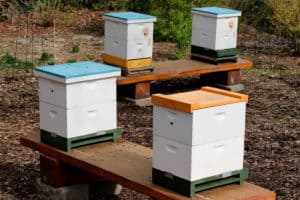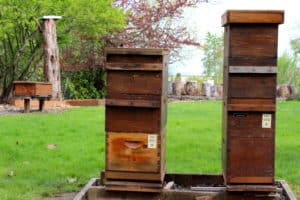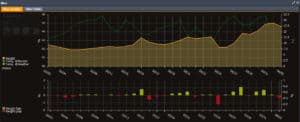
Spring has come early to western Oregon and it means that monitoring and sampling of colonies in the newly established sentinel apiary is already underway. The sentinel apiary is located at the Oak Creek Center for Urban Horticulture (OCCUH) on the western edge of the Oregon State University campus in Corvallis. The location provides a diversity of forage including natural, agricultural and low density urban areas.


The OCCUH apiary is maintained for research and teaching purposes as part of the OSU Honeybee Lab and Oregon Master Beekeeper program. The apiary consists of colonies in a variety of configurations including Langstroth, Top Bar, Warre, and bee trees which show a bit of the history and diversity of keeping bees.


The sentinel apiary consists of 8 colonies that all successfully overwintered from the 2014 season. Each Colony will be formally evaluated for strength (frames of bees, frames of stores), and queen quality (pattern and frames of brood) on a monthly basis as well as being sampled monthly for Varroa and Nosema levels. The initial colony evaluation and sampling took place on 3/24 and subsequent samples will be collected on the 3rd Friday of each month as part of the Master Beekeeper Friday in the Apiary program. In addition to routine colony evaluation and sampling, pollen will also be collected on a semimonthly basis to provide pollen abundance and diversity data throughout the season.



A hive scale is also being used on one colony to monitor nectar flow and environmental conditions by recording colony weight as well as temperature and humidity data at 15 minute increments. The dry and mild winter in the Willamette Valley has meant that vegetation and the condition of the colonies is about a month ahead of schedule for a typical season. Colonies were able to take advantage of some the warm March weather and early blooms to capture some of the maple flow which they miss many years due to cold and wet conditions. They were also able to get out and find good amounts of pollen from a variety of sources which has led to strong brood rearing and an early desire to swarm.
